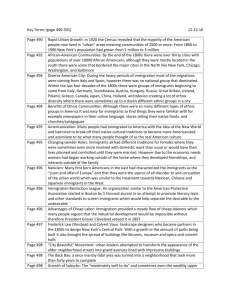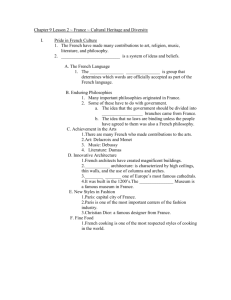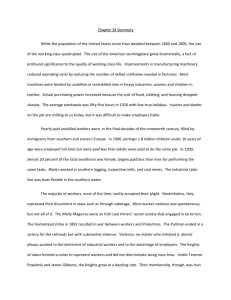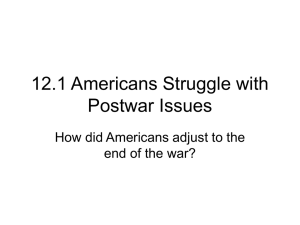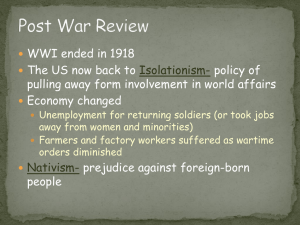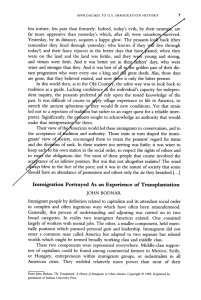Chp 7-2 Powerpoint
advertisement
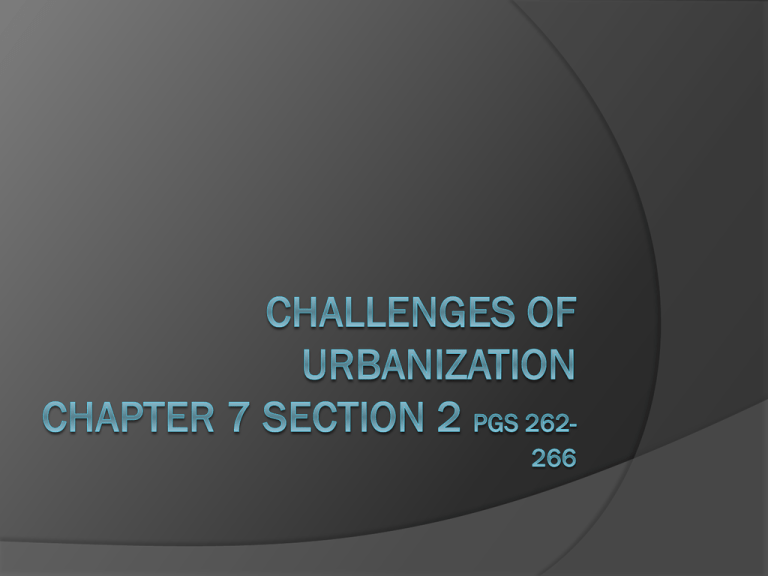
Urban Opportunities Rapid urbanization: growth of cities Immigrants Settle in Cities ○ Most immigrants became city dwellers because cities were the cheapest and most convenient places to live as well as plentiful jobs for unskilled labor. ○ Clustering in neighborhoods with those of the same ethnic background (Ghettos) ○ Growth revitalized cities, but created serious problems that had an impact on the poor. Migration From Country to City ○ Farming technology made many advancements (good news/bad news) ○ Forced many rural people including AfricanAmericans out of farming & into the city to take whatever job was available Urban Cultural Opportunities ○ New forms of entertainment were a lure to the city Example: sports, theater ○ Job competition between African Americans and white immigrants resulted in racial tension. Urban Problems Housing ○ Working class families could either: ○ Buy a house on the outskirts and deal with Transportation issues or…Rent a room in a boardinghouse and share kitchen, and diningroom facilities with other families ○ Row houses: attached single-family dwellings that shared side walls with other similar houses ○ Growth of Tenements: Multi-family urban dwellings that were overcrowded and unsanitary. Other Problems Transportation ○ Before industrialization going to work was a walk, or a horse ride ○ Cable cars are developed and utilized ○ 1888, 1st practical electric streetcar line began operating in Richmond, Virginia ○ Why not keep using horses? Sanitation ○ Horse manure pile dup on the streets, sewage flowed through open gutters, and factories spewed foul smoke into the air ○ Trash collection was inconsistent and people dumped their garbage in the streets ○ Sewer lines were not widely used until 1900. Even more Problems Threat of Fire ○ Water supply was a problem, and candles or lanterns were used for light ○ Most buildings made of wood, and built close to one another - The Great Chicago Fire (Oct. 8, 1871) - The San Francisco Earthquake (April 18, 1906) ○ Newer buildings would be built of brick, steel, and concrete ○ Invention of the automatic fire sprinkler in 1874 Crime ○ Pickpockets and thieves flourished in urban crowds, and con men took advantage of non-English speaking immigrants ○ New York organized the 1st full-time, paid police force in 1844 ○ Gangs controlled areas with high crime rates. Settlement House Movement Social Gospel Movement An early reform program to combat urban poverty and poor living conditions Preached salvation through service to the poor Reformers established Settlement houses that provided assistance to the people in the area, especially new immigrants. One of the biggest activists was Jane Addams





